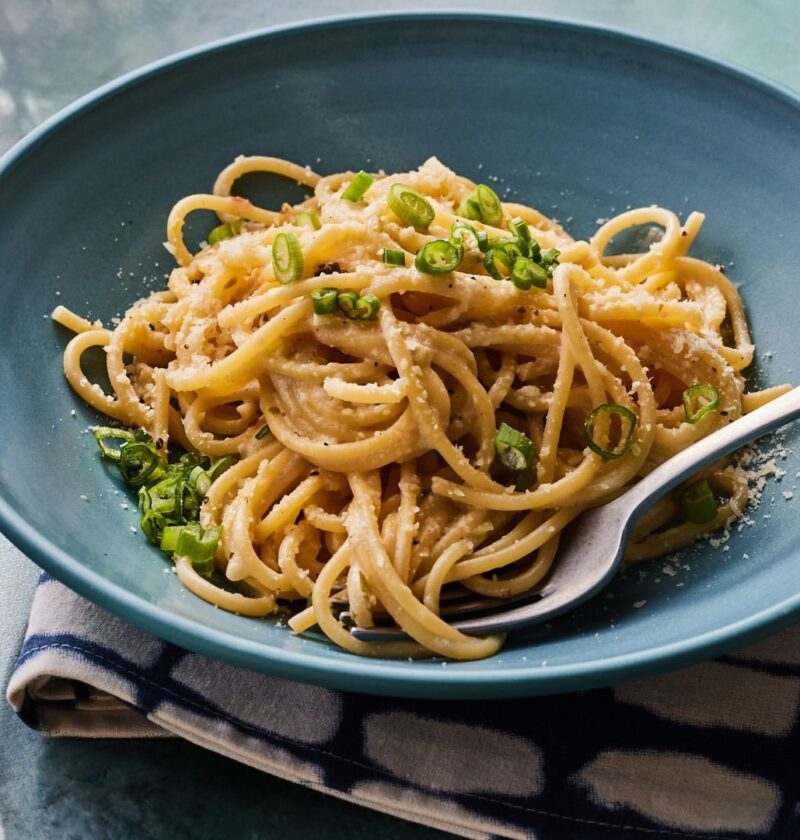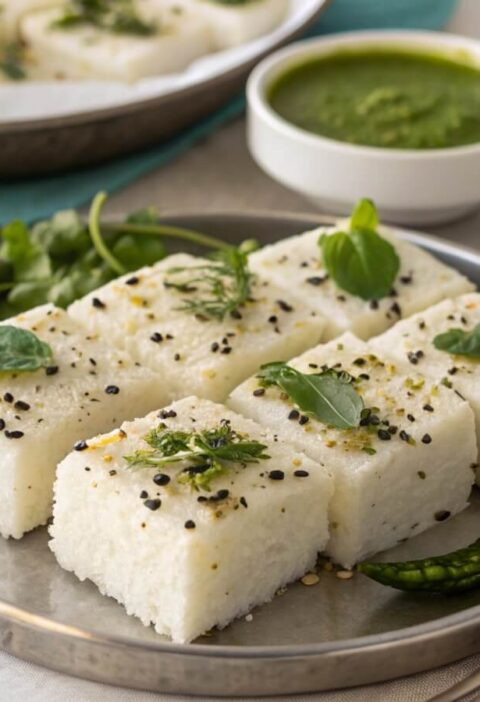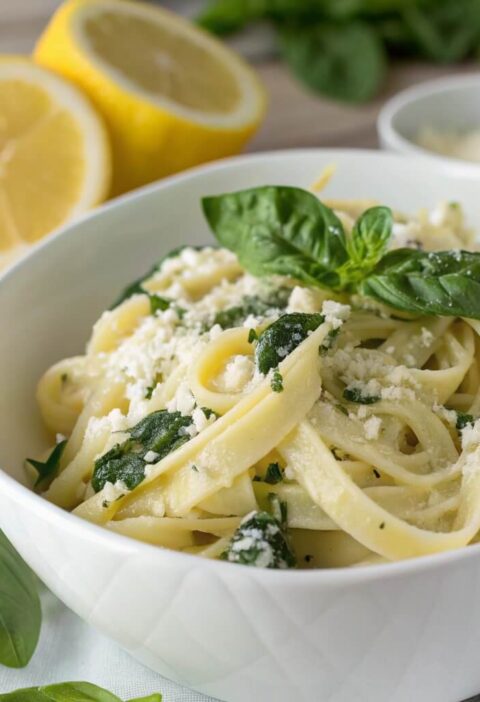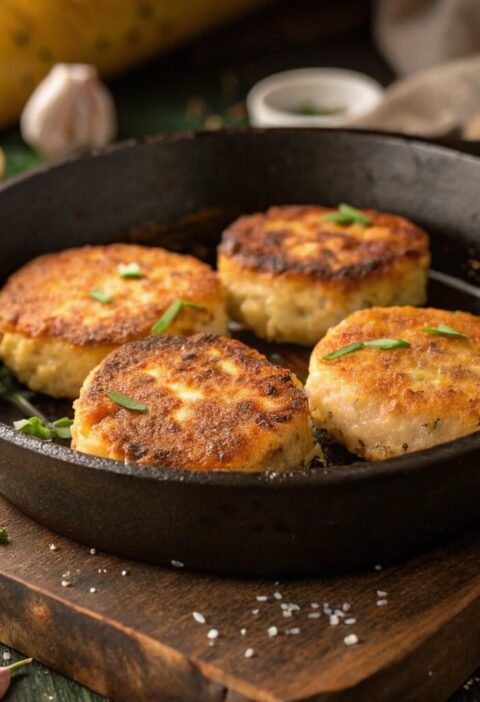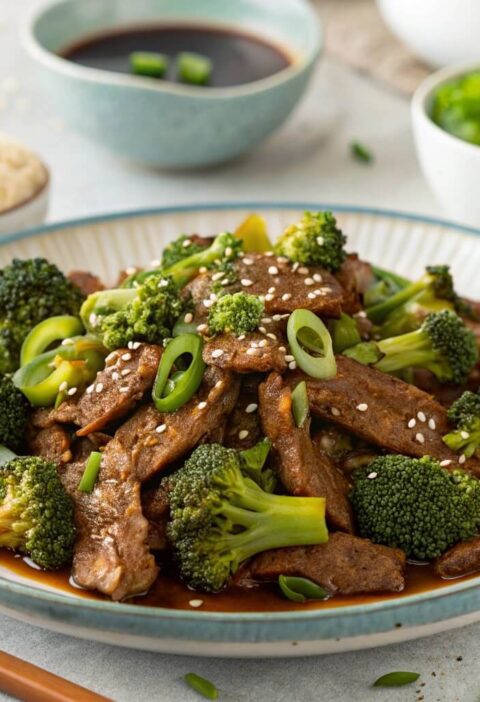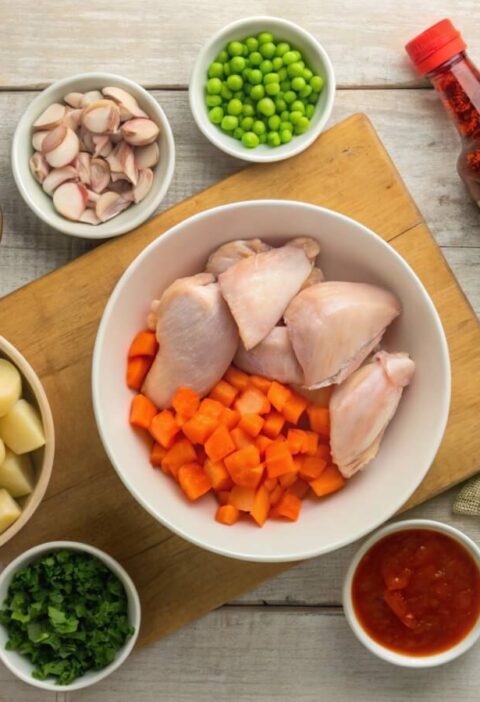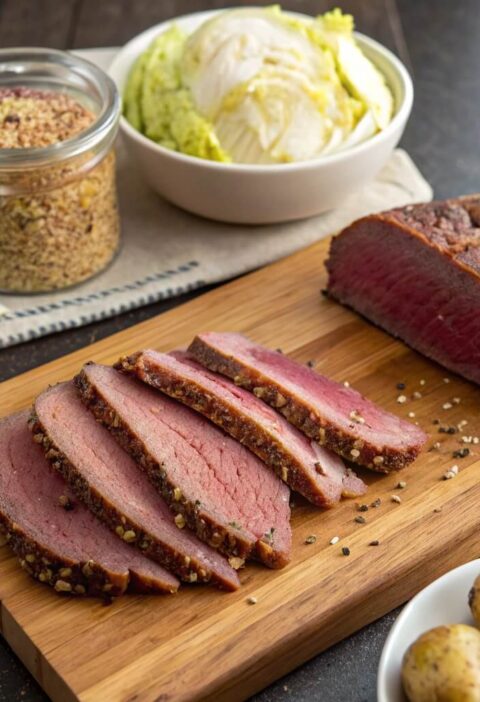Lemon Ricotta Spinach Pasta: A Fresh and Creamy Delight
Lemon ricotta spinach pasta brings together creamy cheese, bright citrus, and nutritious greens in one simple dish. This pasta comes together in under 30 minutes but tastes like something from a fancy Italian restaurant. Home cooks love this recipe because it uses basic ingredients to create something special without much effort.
Many families turn to this pasta on busy weeknights when they need something quick but don’t want to give up flavor. A mom in Boston says, “My kids ask for ‘the green pasta’ at least once a week now.” A college student reports, “This is my go-to recipe to impress friends without spending much money.”
Essential Ingredients for Perfect Lemon Ricotta Spinach Pasta
For this pasta, you need: pasta (any shape works but linguine or fettuccine hold the sauce well), fresh ricotta cheese, fresh spinach, lemon (both juice and zest), garlic, olive oil, salt, pepper, and grated Parmesan cheese. Optional ingredients include red pepper flakes for heat, pine nuts for crunch, and fresh herbs like basil or parsley.
The quality of ricotta matters most in this dish. Look for whole milk ricotta that feels smooth, not grainy. Fresh spinach works better than frozen because it keeps its bright color and doesn’t release too much water into the sauce.
Step-by-Step Cooking Guide
Preparing Your Ingredients
Before you start cooking, get everything ready. Wash and dry 4 cups of fresh spinach. Grate the zest from one lemon, then cut the lemon in half for juicing later. Chop 2-3 cloves of garlic finely. Measure out 1 cup of ricotta cheese and ½ cup of grated Parmesan. Having everything ready makes the cooking process smooth and fast.
If you’re adding extras like pine nuts, toast them in a dry pan for 2-3 minutes until golden. This small step adds big flavor. For herbs, chop them at the last minute to keep their bright color and fresh taste.
Cooking the Pasta
Bring a large pot of water to a rolling boil. Add enough salt to make the water taste like the sea – about 1 tablespoon per gallon of water. This seasons the pasta from the inside out. Add 1 pound of pasta and cook until al dente, following the package directions but checking 1-2 minutes early. Before draining, save 1 cup of pasta water – this starchy water helps create a silky sauce.
Many home cooks make the mistake of not saving pasta water, then end up with dry pasta. The starch in this water acts as a natural thickener and helps the sauce stick to the pasta.
Creating the Sauce
While the pasta cooks, start the sauce. Heat 2 tablespoons of olive oil in a large skillet over medium heat. Add the chopped garlic and cook for 30 seconds until fragrant but not brown. Garlic burns easily and turns bitter, so keep an eye on it.
Add the spinach to the pan in batches, stirring until it wilts down. This happens fast – usually within 1-2 minutes. Once all spinach is wilted, add the lemon zest, ¼ teaspoon black pepper, and a pinch of salt. If using red pepper flakes, add ¼ teaspoon now.
Turn the heat to low and add the ricotta cheese, stirring to create a creamy sauce. If it seems too thick, add a few tablespoons of the reserved pasta water. Squeeze in the juice from half a lemon and stir again. Taste and adjust seasonings if needed.
Combining Pasta and Sauce
Drain the pasta, remembering to save some pasta water. Add the hot pasta directly to the sauce in the skillet. Toss everything together using tongs or two large spoons. If the mixture seems dry, add more pasta water, a few tablespoons at a time.
Add most of the Parmesan cheese, saving some for topping. Toss again until the cheese melts into the sauce. The heat from the pasta and sauce should melt the cheese without needing additional cooking.
Variations and Add-ins to Try
Protein Additions
This pasta works well with added protein. For a vegetarian option, add a can of drained and rinsed white beans or chickpeas when you add the ricotta. They warm through quickly and add fiber and protein.
For meat eaters, cooked chicken breast cut into bite-sized pieces makes this a more filling meal. Simply cook the chicken separately with salt and pepper, then add it to the finished pasta. Salmon also pairs beautifully with the lemon and ricotta flavors.
Italian sausage, removed from its casing and crumbled into the pan before adding garlic, creates a heartier version of this dish. Cook the sausage completely before continuing with the rest of the recipe.
Vegetable Variations
While spinach works perfectly in this dish, you can swap it for other greens. Try arugula for a peppery kick or kale for a heartier texture (though kale needs a few minutes longer to soften). Swiss chard makes a good substitute too.
Add spring vegetables like asparagus or peas for seasonal flair. Cut asparagus into 1-inch pieces and add them to the pasta water for the last 2 minutes of cooking. Frozen peas can go in during the last minute of pasta cooking time.
For a more substantial pasta, add roasted vegetables. Roasted cherry tomatoes burst with sweet flavor, while roasted red peppers add smoky notes. Simply toss vegetables with olive oil, salt and pepper, then roast at 425°F until tender before adding to the finished pasta.
Herb and Flavor Twists
Fresh herbs transform this simple pasta. Basil adds a sweet, aromatic quality. Mint pairs surprisingly well with the lemon. Chives give a mild onion flavor that complements the creamy ricotta.
To change the flavor profile completely, try swapping the lemon for orange zest and juice. This creates a sweeter, less tangy pasta that works especially well with seafood additions.
For those who enjoy earthy flavors, add 2 teaspoons of fresh thyme leaves when cooking the garlic. The thyme infuses the oil with herb flavor that carries throughout the dish.
Pairing Suggestions and Serving Tips
Wine and Beverage Pairings
This bright, creamy pasta calls for crisp white wines. A Pinot Grigio or Sauvignon Blanc works perfectly, their acidity matching the lemon in the pasta. If you prefer red wine, choose something light like a Pinot Noir that won’t overpower the delicate flavors.
For non-alcoholic options, sparkling water with a squeeze of lemon or a splash of lemonade complements the citrus notes in the pasta. Iced tea with a sprig of mint also makes a refreshing pairing.
Serving Suggestions
Serve this pasta immediately after mixing for the best texture and flavor. The ricotta sauce can thicken if it sits too long. If you need to make it ahead, save some extra pasta water to loosen the sauce when reheating.
For presentation, place the pasta in a large, shallow bowl rather than on flat plates. This catches any sauce that might otherwise run off. Top with the reserved Parmesan cheese, a drizzle of good olive oil, and fresh black pepper.
A simple side salad with a light vinaigrette balances the richness of the pasta. Choose bitter greens like radicchio or endive for contrast. Crusty bread makes a good addition for soaking up extra sauce.
Storage and Reheating Tips
This pasta keeps in the refrigerator for up to three days in an airtight container. The flavors often develop nicely overnight, though the pasta may absorb some of the sauce.
To reheat, add a splash of water or milk to loosen the sauce. Warm gently in a covered skillet over medium-low heat, stirring occasionally. Avoid the microwave if possible, as it can make the pasta rubbery and the sauce separate.
For the best leftovers experience, make extra sauce but cook only the amount of pasta you need for one meal. Store leftover sauce separately and cook fresh pasta when ready to eat again.

